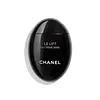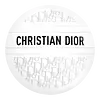What's inside
What's inside
 Key Ingredients
Key Ingredients

 Benefits
Benefits

 Concerns
Concerns

 Ingredients Side-by-side
Ingredients Side-by-side

Water
Skin ConditioningGlycerin
HumectantGlycol Stearate Se
EmulsifyingIsostearyl Isostearate
EmollientButyrospermum Parkii Butter
Skin ConditioningDimethicone
EmollientJojoba Esters
EmollientMedicago Sativa Extract
TonicGlycyrrhiza Glabra Root Extract
BleachingIpomoea Batatas Root Extract
Skin ConditioningPanthenol
Skin ConditioningCetyl Alcohol
EmollientSodium Polyacrylate
AbsorbentStearyl Alcohol
EmollientPolyglycerin-3
HumectantHydroxypropyl Starch Phosphate
Tocopheryl Acetate
AntioxidantPhytosteryl Canola Glycerides
Skin ConditioningDimethicone Crosspolymer
Emulsion StabilisingChlorphenesin
AntimicrobialCaprylyl Glycol
EmollientPropylene Glycol
HumectantParfum
MaskingButylene Glycol
HumectantAcacia Decurrens Flower Wax
EmollientHelianthus Annuus Seed Wax
Skin ConditioningSodium Hyaluronate
HumectantAdenosine
Skin ConditioningChlorhexidine Digluconate
AntimicrobialDipropylene Glycol
Humectant1,2-Hexanediol
Skin ConditioningPhytic Acid
Sodium Hydroxide
BufferingSodium Citrate
BufferingAscorbyl Palmitate
AntioxidantSodium Benzoate
MaskingHydrochloric Acid
BufferingCitric Acid
BufferingCI 14700
Cosmetic ColorantWater, Glycerin, Glycol Stearate Se, Isostearyl Isostearate, Butyrospermum Parkii Butter, Dimethicone, Jojoba Esters, Medicago Sativa Extract, Glycyrrhiza Glabra Root Extract, Ipomoea Batatas Root Extract, Panthenol, Cetyl Alcohol, Sodium Polyacrylate, Stearyl Alcohol, Polyglycerin-3, Hydroxypropyl Starch Phosphate, Tocopheryl Acetate, Phytosteryl Canola Glycerides, Dimethicone Crosspolymer, Chlorphenesin, Caprylyl Glycol, Propylene Glycol, Parfum, Butylene Glycol, Acacia Decurrens Flower Wax, Helianthus Annuus Seed Wax, Sodium Hyaluronate, Adenosine, Chlorhexidine Digluconate, Dipropylene Glycol, 1,2-Hexanediol, Phytic Acid, Sodium Hydroxide, Sodium Citrate, Ascorbyl Palmitate, Sodium Benzoate, Hydrochloric Acid, Citric Acid, CI 14700
Water
Skin ConditioningGlycerin
HumectantDicaprylyl Carbonate
EmollientPropanediol
SolventButyrospermum Parkii Butter
Skin ConditioningButylene Glycol
HumectantCetyl Alcohol
EmollientPentylene Glycol
Skin ConditioningStearyl Alcohol
EmollientSqualane
EmollientDimethicone
EmollientGlyceryl Stearate
EmollientPEG-100 Stearate
Simmondsia Chinensis Seed Oil
EmollientCentella Asiatica Leaf Extract
Skin ConditioningStearyl Glycyrrhetinate
Skin ConditioningSodium Hyaluronate
HumectantParfum
MaskingHydroxyacetophenone
AntioxidantSodium Dehydroacetate
PreservativeSorbitan Isostearate
EmulsifyingSodium Hydroxide
BufferingTocopherol
AntioxidantPotassium Sorbate
PreservativeGlycine Soja Oil
EmollientHydroxyethyl Acrylate/Sodium Acryloyldimethyl Taurate Copolymer
Emulsion StabilisingCarbomer
Emulsion StabilisingWater, Glycerin, Dicaprylyl Carbonate, Propanediol, Butyrospermum Parkii Butter, Butylene Glycol, Cetyl Alcohol, Pentylene Glycol, Stearyl Alcohol, Squalane, Dimethicone, Glyceryl Stearate, PEG-100 Stearate, Simmondsia Chinensis Seed Oil, Centella Asiatica Leaf Extract, Stearyl Glycyrrhetinate, Sodium Hyaluronate, Parfum, Hydroxyacetophenone, Sodium Dehydroacetate, Sorbitan Isostearate, Sodium Hydroxide, Tocopherol, Potassium Sorbate, Glycine Soja Oil, Hydroxyethyl Acrylate/Sodium Acryloyldimethyl Taurate Copolymer, Carbomer
 Reviews
Reviews

Ingredients Explained
These ingredients are found in both products.
Ingredients higher up in an ingredient list are typically present in a larger amount.
Butylene Glycol (or BG) is used within cosmetic products for a few different reasons:
Overall, Butylene Glycol is a safe and well-rounded ingredient that works well with other ingredients.
Though this ingredient works well with most skin types, some people with sensitive skin may experience a reaction such as allergic rashes, closed comedones, or itchiness.
Learn more about Butylene GlycolThis ingredient is also known as shea butter. It is an effective skin hydrator and emollient.
Emollients help soothe and soften your skin. It does this by creating a protective film on your skin. This barrier helps trap moisture and keeps your skin hydrated. Emollients may be effective at treating dry or itchy skin.
Shea butter is rich in antioxidants. Antioxidants help fight free-radicals, or molecules that may harm the body. It is also full of fatty acids including stearic acid and linoleic acid. These acids help replenish the skin and keep skin moisturized.
While Shea Butter has an SPF rating of about 3-4, it is not a sunscreen replacement.
Shea butter may not be fungal acne safe. We recommend speaking with a professional if you have any concerns.
Learn more about Butyrospermum Parkii ButterCetyl Alcohol is a fatty alcohol. Fatty Alcohols are most often used as an emollient or to thicken a product.
Its main roles are:
Though it has "alcohol" in the name, it is not related to denatured alcohol or ethyl alcohol.
The FDA allows products labeled "alcohol-free" to have fatty alcohols.
Learn more about Cetyl AlcoholDimethicone is a type of synthetic silicone created from natural materials such as quartz.
What it does:
Dimethicone comes in different viscosities:
Depending on the viscosity, dimethicone has different properties.
Ingredients lists don't always show which type is used, so we recommend reaching out to the brand if you have questions about the viscosity.
This ingredient is unlikely to cause irritation because it does not get absorbed into skin. However, people with silicone allergies should be careful about using this ingredient.
Note: Dimethicone may contribute to pilling. This is because it is not oil or water soluble, so pilling may occur when layered with products. When mixed with heavy oils in a formula, the outcome is also quite greasy.
Learn more about DimethiconeGlycerin is already naturally found in your skin. It helps moisturize and protect your skin.
A study from 2016 found glycerin to be more effective as a humectant than AHAs and hyaluronic acid.
As a humectant, it helps the skin stay hydrated by pulling moisture to your skin. The low molecular weight of glycerin allows it to pull moisture into the deeper layers of your skin.
Hydrated skin improves your skin barrier; Your skin barrier helps protect against irritants and bacteria.
Glycerin has also been found to have antimicrobial and antiviral properties. Due to these properties, glycerin is often used in wound and burn treatments.
In cosmetics, glycerin is usually derived from plants such as soybean or palm. However, it can also be sourced from animals, such as tallow or animal fat.
This ingredient is organic, colorless, odorless, and non-toxic.
Glycerin is the name for this ingredient in American English. British English uses Glycerol/Glycerine.
Learn more about GlycerinParfum is a catch-all term for an ingredient or more that is used to give a scent to products.
Also called "fragrance", this ingredient can be a blend of hundreds of chemicals or plant oils. This means every product with "fragrance" or "parfum" in the ingredients list is a different mixture.
For instance, Habanolide is a proprietary trade name for a specific aroma chemical. When used as a fragrance ingredient in cosmetics, most aroma chemicals fall under the broad labeling category of “FRAGRANCE” or “PARFUM” according to EU and US regulations.
The term 'parfum' or 'fragrance' is not regulated in many countries. In many cases, it is up to the brand to define this term.
For instance, many brands choose to label themselves as "fragrance-free" because they are not using synthetic fragrances. However, their products may still contain ingredients such as essential oils that are considered a fragrance by INCI standards.
One example is Calendula flower extract. Calendula is an essential oil that still imparts a scent or 'fragrance'.
Depending on the blend, the ingredients in the mixture can cause allergies and sensitivities on the skin. Some ingredients that are known EU allergens include linalool and citronellol.
Parfum can also be used to mask or cover an unpleasant scent.
The bottom line is: not all fragrances/parfum/ingredients are created equally. If you are worried about fragrances, we recommend taking a closer look at an ingredient. And of course, we always recommend speaking with a professional.
Learn more about ParfumSodium Hyaluronate is hyaluronic acid's salt form. It is commonly derived from the sodium salt of hyaluronic acid.
Like hyaluronic acid, it is great at holding water and acts as a humectant. This makes it a great skin hydrating ingredient.
Sodium Hyaluronate is naturally occurring in our bodies and is mostly found in eye fluid and joints.
These are some other common types of Hyaluronic Acid:
Learn more about Sodium HyaluronateSodium Hydroxide is also known as lye or caustic soda. It is used to adjust the pH of products; many ingredients require a specific pH to be effective.
In small amounts, sodium hydroxide is considered safe to use. However, large amounts may cause chemical burns due to its high alkaline.
Your skin has a natural pH and acid mantle. This acid mantle helps prevent harmful bacteria from breaking through. The acid mantle also helps keep your skin hydrated.
"Alkaline" refers to a high pH level. A low pH level would be considered acidic.
Learn more about Sodium HydroxideStearyl Alcohol is a type of fatty alcohol from stearic acid. It is a white, waxy compound used to emulsify ingredients.
Fatty Alcohols are most often used as an emollient or to thicken a product. Emollients help soothe and hydrate the skin by trapping moisture.
They are usually derived from natural fats and oils and therefore do not have the same drying or irritating effect as solvent alcohols. FDA allows products labeled "alcohol-free" to have fatty alcohols.
Learn more about Stearyl AlcoholWater. It's the most common cosmetic ingredient of all. You'll usually see it at the top of ingredient lists, meaning that it makes up the largest part of the product.
So why is it so popular? Water most often acts as a solvent - this means that it helps dissolve other ingredients into the formulation.
You'll also recognize water as that liquid we all need to stay alive. If you see this, drink a glass of water. Stay hydrated!
Learn more about Water